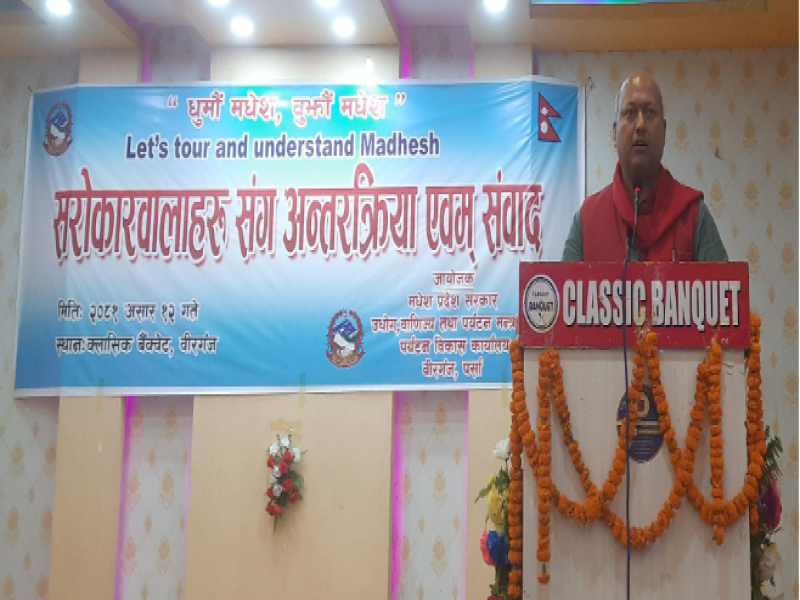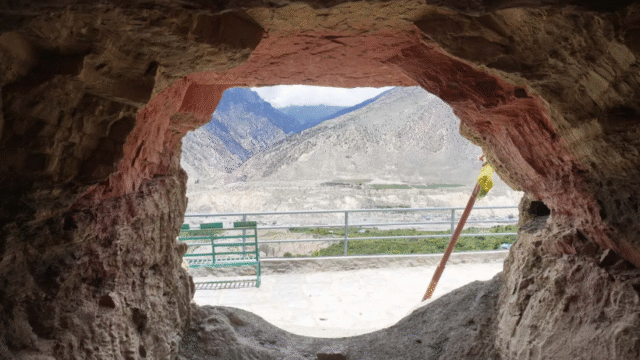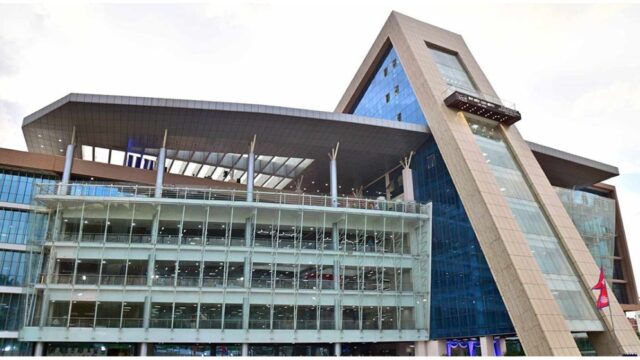Madhesh Province’s Chief Minister Satish Kumar Singh has emphasized the importance of tourism as the cornerstone for the economic upliftment of the region. Speaking at a stakeholder dialogue program organized by the Tourism Development Office, Birgunj, asserted that the development of the tourism sector is crucial for the economic and social transformation of Madhesh Province.
“Tourism is the key to elevating Madhesh Province,” Chief Minister Singh stated. “If we can quickly attract tourists, it will significantly improve the overall economic standards of the region.”
Chief Minister Singh acknowledged that the development of tourism in Madhesh cannot be achieved solely through the efforts of the provincial government. He called for a collaborative approach involving all stakeholders, including local governments and the private sector, to foster tourism development.
“Madhesh Province is home to many historic temples and religious sites that are well-known not only in neighboring India but also in other countries,” he noted. “However, the lack of adequate accommodation and dining facilities has hindered the ability to extend tourists’ stays.”
Singh urged the private sector to invest in the necessary infrastructure for tourists. “The provincial government alone cannot fulfill all the requirements related to tourism. Therefore, the provincial government, local levels, and the private sector must work together to advance tourism development.”
Highlighting the limitless needs and desires of the province, Singh mentioned the necessity of adopting public-private partnership models for the development of the tourism sector.
At the same event, Madhesh Province’s Minister of Industry, Commerce, and Tourism, Yuvraj Bhattarai, announced plans to declare 2082 as “Visit Madhesh Year.” “We are working to promote 2082 as Visit Madhesh Year,” he said, explaining that the provincial government is pushing the slogan ‘Explore Madhesh, Understand Madhesh’ this year.
Minister Bhattarai detailed plans to develop historical and religious sites in the province’s eight districts into four circuits. “We are dividing the eight districts into four circuits to develop the tourism sector,” he said. “Realizing that it may not be possible to develop all four circuits within a single year’s budget, we have allocated funds for the Janakpur Circuit in the upcoming fiscal year.”
Former State Minister of Industry, Commerce, and Tourism, and Provincial Assembly Member Rahman Ansari, criticized the provincial government’s fragmented budget allocations for religious temples and mosques, stressing that this approach would not lead to comprehensive tourism development in the province.
Another Provincial Assembly Member, Janardan Singh Kshetri, suggested focusing on Parsa National Park and Koshi Tappu Wildlife Reserve as key tourist destinations rather than solely on religious tourism. “Just as Chitwan’s Sauraha attracts foreign tourists and generates foreign currency, we need to develop infrastructure to attract international tourists.”
Provincial Assembly Member Shyam Patel highlighted the untapped tourism potential in Parsa district, stating that they have not been able to extend tourists’ stays despite sufficient potential.
Devi Sahay Meena, the Consul General of India in Birgunj, mentioned the deep-rooted social and cultural ties between Nepal and India, which offer immense tourism possibilities in both countries.
Lal Bahadur Shrestha, Chairman of Thori Rural Municipality, expressed disappointment over the lack of budget allocation despite the provincial government’s declaration of Thori as a tourist destination. Upendra Prasad Yadav, Mayor of Mahagadhimai Municipality, pointed out the lack of infrastructure development around the Mahagadhimai Temple despite large fairs being held every five years.
Deputy Vice-Chancellor of Madhesh University, Deepak Shakya, emphasized the need for proper transportation access, accommodation, security, recreation, and refreshment facilities to attract international tourists.
Tourism advocate Om Prakash Sarraf reiterated the necessity for collaboration among the federal government, provincial government, local levels, and the private sector to develop the tourism sector.






